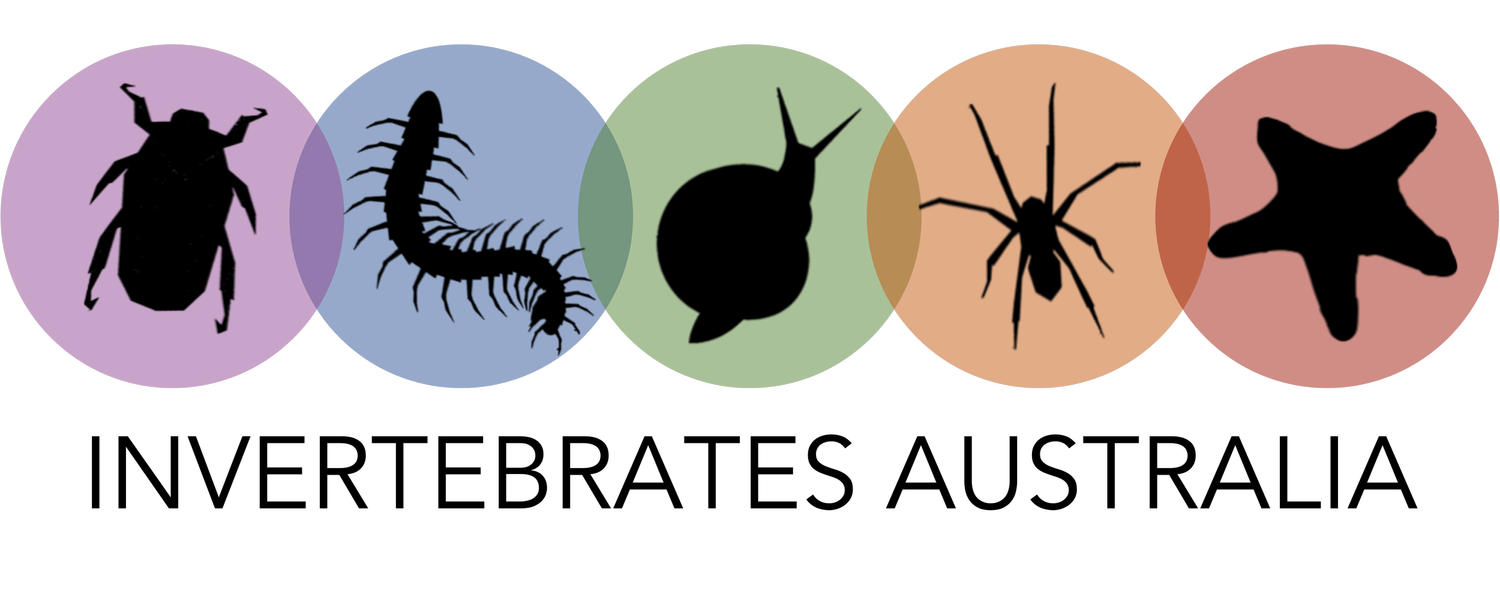Invertebrates Australia recognises that First Nations Peoples never ceded their sovereignty over Australia’s lands and waters

Make an impact today
We need to expand our Christmas Beetle Count! This will involve regular monitoring of some
key regions and providing citizen scientists with the training and equipment to help us!
But we can’t do it without funds. Please consider a donation to our End of Year Appeal today!
Our mission is to influence conservation action, investigate solutions and inspire engagement as the expert voice for invertebrates to benefit Australian nature and people.
Our vision is a future where Australians protect nature by caring for invertebrates.
What we do
We are the only Australian organisation focused on the conservation of 98% of animal diversity that receives far less than 1% of conservation funding.
We use rigorous science including community engagement to prevent extinctions of species and restore ecosystems found nowhere else on Earth.
The challenge
Invertebrate animals make up around 55% of known Australian biodiversity and >95% of known Australian animal diversity. They are fascinating and absolutely crucial to the functioning of our ecosystems. However, they are largely ignored in conservation planning despite hundreds of species listed as threatened. This is an urgent problem that needs solving if we are to ensure that our ecological and economic systems remain stable.
How we’re helping
Invertebrates Australia was founded in September 2021 by three scientists, catalysed by the extreme extent and severity of the 2019/2020 megafires. By creating a group that can represent all invertebrates we’re making a big positive impact on ecological and economic outcomes in biodiversity management. We’re doing this by facilitating, conducting and promoting scientific research and conservation activities; engaging our extensive network of experts; and partnering with existing scientific societies and environmental charities.
Who are the invertebrates?
Invertebrates are insects, spiders, crabs, worms, snails, jellyfish, sponges, urchins and their relatives, and there are currently about 100,000 species in Australia which have scientific names. That might sound like a lot, but it’s only around 30% of the actual number of species thought to exist. This means that around 70% of Australian invertebrates, or roughly 200,000 species, remain unknown to Western science.
Where do they live?
They live everywhere., in the tallest trees, the aeroplankton in the sky, in the deepest parts of the sea, and even in your eyebrows. For the named invertebrate species (about 100,000) we only have access to data on where half of them live; the distributions of the rest are either unknown or only exist on labels in museum collections, waiting to be transcribed and digitised.
What do they do?
Invertebrates perform critical functions that keep ecosystems healthy. They include decomposing dead things and releasing their nutrients back into the ecosystem, dispersing seeds and spores and pollinating plants, and regulating other organisms - they are herbivores, parasites, predators, and prey. Despite their well-known importance, the roles of individual species, groups of species, and how they interact and influence ecosystem functions are poorly understood.
Are they OK?
Australian invertebrates are susceptible to the same problems that threaten biodiversity across the world: climate change, habitat destruction, pollution, and invasive species. Only about 480 Australian invertebrate species are listed as threatened, comprising around 0.6% of the named species. There is likely to be many many more species at risk of extinction.
Golden Christmas Beetle. Image: Alan Henderson Minibeast Wildlife
Buy our Merchandise
Buy our Merchandise
Check out our merch store!
All proceeds support our work.





